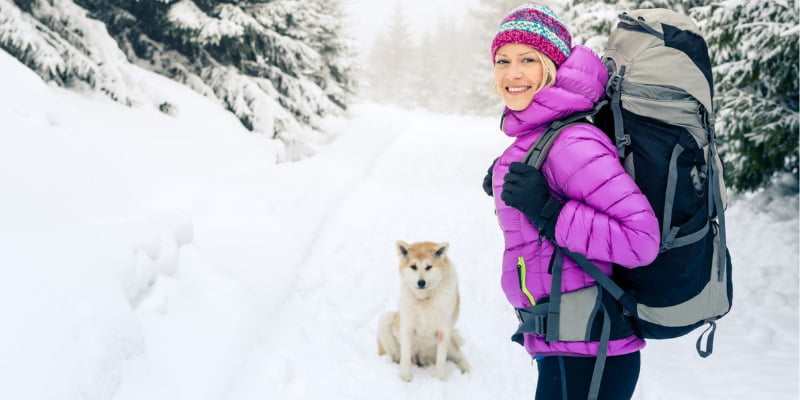How To Keep Bedding Dry When Camping

Camping requires careful planning and preparation, especially when it comes to keeping your bedding dry. A damp sleeping bag or wet tent can quickly ruin your camping trip, leading to discomfort and even hypothermia in some cases. Whether you’re camping in a humid environment or experiencing unexpected rain, there are several ways to keep your bedding dry and ensure a good night’s sleep.
In this guide, I’ll outline some tips and tricks for keeping your bedding dry when camping.
How To Keep Bedding Dry When Camping – Step by Step
Certainly! Here’s a step-by-step guide on how to keep your bedding dry when camping:
Choose the Right Tent
The first step to keeping your bedding dry is to choose a tent that is suitable for the weather conditions you’ll be camping in. Make sure your tent is waterproof and has a rainfly that covers the entire tent. A good rainfly will keep water from seeping through the tent material, keeping your bedding dry.
Site Selection
Choose a dry, level spot for your tent. Avoid setting up your tent in low-lying areas where water can collect and puddle. Look for higher ground where water will run off and not pool around your tent.
Use a Ground Tarp
A ground tarp or footprint can help keep moisture from seeping into your tent from the ground. Make sure the tarp is slightly smaller than your tent floor, so water doesn’t pool between the tarp and tent floor.
Pack Your Sleeping Bag in a Waterproof Compression Sack
Even if your tent stays dry, dew or condensation can still form inside the tent. To keep your sleeping bag dry, pack it in a waterproof compression sack. This will not only protect it from moisture inside the tent but also from any rain that might come through. You can learn more from here for storing your sleeping bag.
Keep Wet Items Outside the Tent
Wet items such as raincoats, towels, or boots should be kept outside the tent. This will help prevent moisture from seeping inside the tent and onto your bedding.
Use a Clothesline
If your bedding does get wet, use a clothesline to hang it up to dry during the day. Make sure the bedding is completely dry before using it again, as damp bedding can be uncomfortable and can lead to hypothermia in cold weather.
Ventilate Your Tent
Good ventilation is essential for keeping your bedding dry. Make sure to keep the windows and doors of your tent open to allow for good air circulation. This will help prevent condensation from forming inside the tent.
Consider Using a Tarp
In addition to a rainfly, you can also use a tarp to provide additional protection from the rain. Simply drape the tarp over your tent, making sure it extends beyond the tent’s edges to create a barrier between your tent and the rain. Here you can find some of the best backpacking tarps on the market.
Stay Dry Yourself
Finally, the best way to keep your bedding dry is to stay dry yourself. Wear waterproof clothing and footwear, and avoid getting wet whenever possible. If you do get wet, change into dry clothes as soon as possible and avoid getting into your sleeping bag until you’re completely dry.
Frequently Asked Questions
Here are some frequently asked questions and answers about how to keep bedding dry when camping:
Why is it important to keep bedding dry when camping?
Keeping your bedding dry is important for a comfortable and safe camping experience. Wet bedding can lead to discomfort and even hypothermia in cold weather.
What should I look for in a tent to keep bedding dry?
Look for a waterproof tent with a rainfly that covers the entire tent. Good ventilation is also essential for preventing condensation from forming inside the tent.
Can I use a regular compression sack for my sleeping bag?
Regular compression sacks are not waterproof and may not keep your sleeping bag dry. Use a waterproof compression sack to protect your sleeping bag from moisture.
Should I pack my bedding in plastic bags?
Packing your bedding in plastic bags can trap moisture inside and make it more difficult for your bedding to dry. Use breathable storage bags or waterproof compression sacks instead.
What should I do if my bedding gets wet?
Use a clothesline to hang up wet bedding to dry during the day. If the bedding is still damp at bedtime, consider using a backup set of dry bedding.
Can I use a tarp instead of a rainfly?
While a tarp can provide additional protection from the rain, it may not fit your tent as well as a rainfly and may not provide adequate ventilation.
Can I use a space heater to dry out my bedding?
No, it’s not safe to use a space heater inside a tent. Instead, hang wet bedding to dry during the day and use dry backup bedding if necessary.
Should I bring extra towels for drying off wet bedding?
While it’s a good idea to have extra towels on hand for various reasons, they may not be effective for drying off wet bedding. Hang wet bedding to dry during the day and use dry backup bedding if necessary.
Conclusion
As I mentioned earlier, keeping your bedding dry is essential for a comfortable and safe camping trip. By choosing the right tent, site selection, using a ground tarp, packing your sleeping bag in a waterproof compression sack, keeping wet items outside the tent, using a clothesline, ventilating your tent, considering using a tarp, and staying dry yourself, you can prevent moisture from ruining your camping experience.
It’s always better to be over-prepared when it comes to camping, so be sure to pack everything you need to keep yourself and your bedding dry. With these tips in mind, you can enjoy a restful night’s sleep and wake up feeling refreshed and ready for another day of adventure.





